When it comes to indoor plants, not everyone has a green thumb or the time to care for high-maintenance varieties. That’s why low-maintenance indoor plants are ideal for those who want to enjoy the benefits of greenery without the added effort. These plants are known for their ability to thrive with minimal care and are perfect for beginners or busy individuals.
In this article, I will explore some of the best low-maintenance indoor plants that are easy to care for and can brighten up any space. Whether you have limited natural light, tend to forget to water your plants, or simply want to add some greenery to your home with minimal effort, I’ve got you covered. From snake plants to peace lilies, these low-maintenance plants will bring life and beauty to your indoor spaces with ease. So let’s dive in and discover the top choices for low-maintenance indoor plants.
Key Takeaways:
- Low-maintenance indoor plants are perfect for individuals who want to enjoy greenery with minimal effort.
- Snake plants, spider plants, pothos, ZZ plants, peace lilies, jade plants, aloe vera, and rubber plants are some of the best low-maintenance indoor plants.
- These plants require minimal watering, can tolerate low light conditions, and are resilient to neglect.
- Low-maintenance indoor plants are excellent air purifiers, improving indoor air quality.
- With their unique appearances and easy care requirements, low-maintenance indoor plants are ideal for beginners or busy individuals.
Snake Plant (Sansevieria)
Sansevieria, commonly known as snake plant or mother-in-law’s tongue, is one of the best indoor plants for those seeking low-maintenance options. With its ability to thrive in various conditions, the snake plant is perfect for beginners or individuals with busy schedules. The long, sword-like leaves of the snake plant come in different colors and patterns, adding visual interest to any space.
Aside from its aesthetic appeal, the snake plant offers a range of benefits. It is an excellent air purifier, removing toxins from the air and improving indoor air quality. This makes it an ideal choice for any room, including ones with limited natural light.
When it comes to caring for snake plants, their tolerance for neglect is remarkable. They can thrive in low to bright indirect light and require minimal watering, as they are drought-tolerant. Overwatering can be detrimental to these plants, so it’s best to allow the soil to dry out between waterings. Snake plants are also known for their ability to thrive in low-light conditions, making them perfect for indoor spaces with limited natural light.
Benefits and Care Tips for Snake Plants
| Benefits of Snake Plants | Care Tips for Snake Plants |
|---|---|
| Excellent air purifiers, improving indoor air quality | Thrives in low to bright indirect light |
| Adds visual interest to any space with attractive leaves | Requires minimal watering, as it is drought-tolerant |
| Tolerance for neglect, making it ideal for beginners or busy individuals | Thrives in low-light conditions |
Spider Plant (Chlorophytum comosum)
Spider plants, scientifically known as Chlorophytum comosum, are another excellent choice for low-maintenance indoor plants. These plants are characterized by their long, arching leaves with white stripes, giving them a unique and attractive appearance.
Spider plants are known for their air-purifying properties, removing harmful substances from the air and improving indoor air quality. They are also easy to propagate, producing small plantlets that can be rooted in water or soil to create new plants.
In terms of care, spider plants prefer bright indirect light but can tolerate lower light conditions. They thrive in moderate to cool temperatures and require regular watering, allowing the top inch of soil to dry out between waterings. Spider plants are also tolerant of some neglect and can bounce back quickly from dry conditions.
| Keyword | Keyword Variation |
|---|---|
| spider plant care | how to care for spider plants |
| benefits of spider plants | spider plants for low light |
| spider plants for beginners |
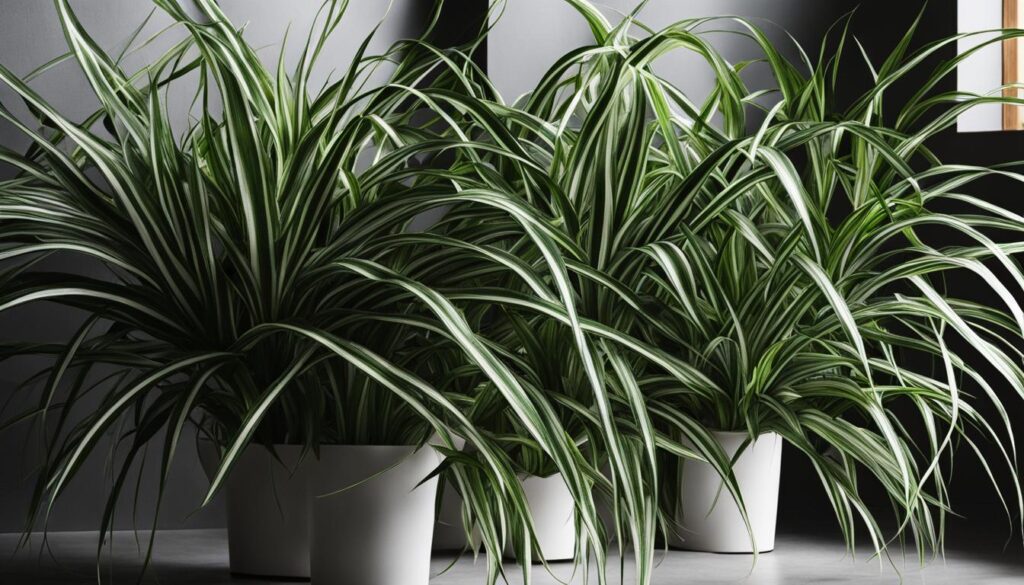
With their striking foliage and easy propagation, spider plants are a popular choice for low-maintenance indoor plants.
Pothos (Epipremnum aureum)
Benefits and Care Tips for Pothos Plants
Pothos, scientifically known as Epipremnum aureum, is a versatile and low-maintenance indoor plant that is perfect for beginners. These plants have heart-shaped leaves that come in various shades of green and can also feature variegated patterns, adding visual interest and beauty to any room. Pothos plants are known for their trailing vines, making them a great choice for hanging baskets or as trailing accents on shelves and windowsills.
Aside from their aesthetic appeal, pothos plants are also excellent air purifiers, removing toxins from the air and improving indoor air quality.
When it comes to care, pothos plants are highly adaptable and can thrive in a variety of conditions. They prefer bright indirect light but can tolerate lower light levels. Pothos plants are also forgiving when it comes to watering and can withstand periods of drought. It’s best to allow the top inch of soil to dry out before watering, as overwatering can lead to root rot.
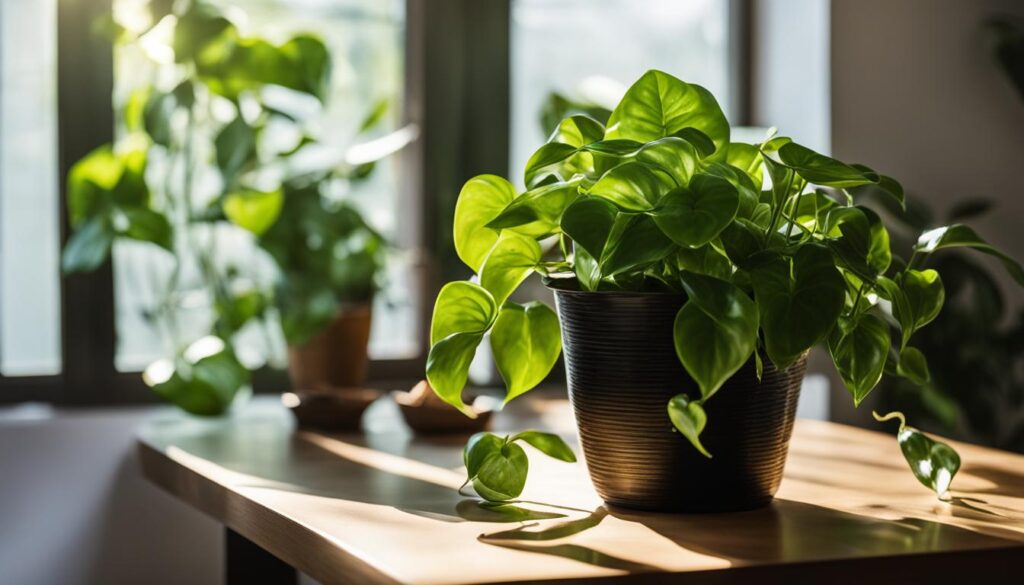
With their versatility and low-maintenance requirements, pothos plants are a top choice for indoor greenery.
| Care Tips for Pothos Plants | Benefits of Pothos Plants |
|---|---|
| – Place the pothos plant in bright indirect light – Allow the top inch of soil to dry out between waterings – Trim or prune the plant to control its size and shape – Clean the leaves regularly to remove dust and promote photosynthesis |
– Excellent air purifiers, improving indoor air quality – Can thrive in a variety of light conditions, including low light – Low-maintenance and forgiving of irregular watering – Adds aesthetic appeal to any room with its trailing vines and variegated leaves |
ZZ Plant (Zamioculcas zamiifolia)
The ZZ plant, scientifically known as Zamioculcas zamiifolia, is a popular choice for low-maintenance indoor plants. This plant features glossy, dark green leaves that grow in an arching pattern, giving it a unique and beautiful appearance. ZZ plants are highly adaptable and can tolerate a wide range of conditions, making them ideal for indoor spaces with less than ideal growing conditions.
One of the key benefits of ZZ plants is their ability to thrive in low-light environments, making them perfect for rooms with limited natural light. These plants do well in bright indirect light but can also tolerate lower light levels. This makes them an excellent choice for areas of your home that don’t receive direct sunlight.
In addition to their tolerance for low light, ZZ plants are also highly drought-tolerant. They can withstand periods of neglect and thrive with minimal watering. It’s best to allow the soil to dry out between waterings to prevent overwatering and root rot. This makes ZZ plants ideal for busy individuals or those who tend to forget about watering their plants.
Another advantage of ZZ plants is their ability to remove toxins from the air, improving indoor air quality. They are excellent air purifiers, making them a great addition to any space, especially in homes with poor ventilation.
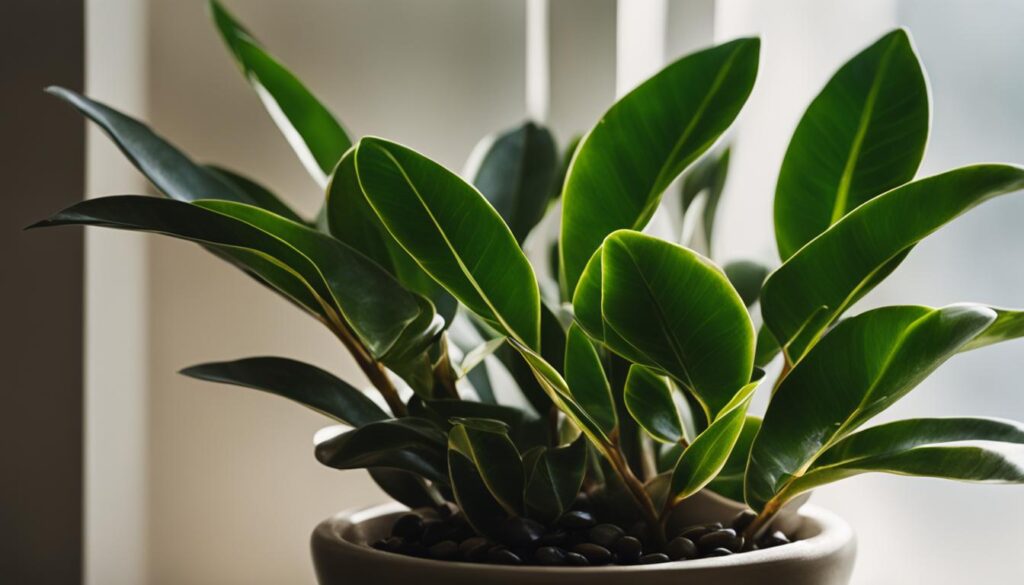
Overall, ZZ plants are a top choice for low-maintenance indoor plants due to their striking appearance, ability to thrive in low light, and resilience to neglect. Whether you’re a beginner or a seasoned plant enthusiast, the ZZ plant is a great addition to your indoor plant collection.
Peace Lily (Spathiphyllum)
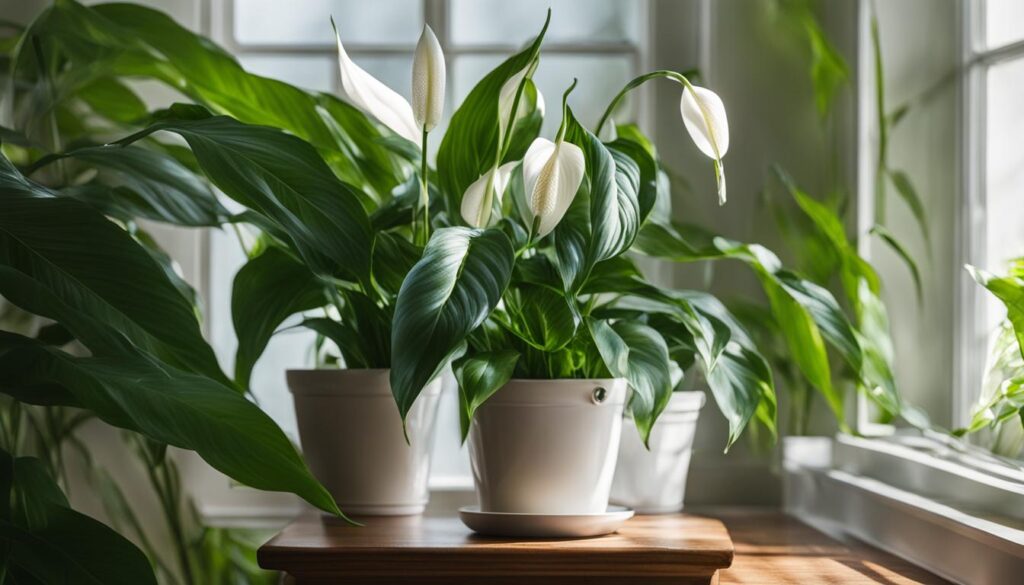
Benefits and Care Tips for Peace Lilies
Peace lilies, scientifically known as Spathiphyllum, are a popular choice for low-maintenance indoor plants. These plants are characterized by their dark green leaves and white flowers, which resemble a peace sign. Peace lilies are known for their air-purifying properties, removing toxins from the air and improving indoor air quality. They also have the ability to tolerate low light conditions, making them perfect for rooms with limited natural light.
When it comes to caring for peace lilies, they are relatively easy to care for and require minimal watering. It’s best to allow the top few inches of soil to dry out before watering, as overwatering can lead to root rot. These plants prefer moderate temperatures and high humidity, making them a good choice for bathrooms or kitchens.
With their striking white flowers and ability to thrive in low light, peace lilies are an excellent choice for low-maintenance indoor plants.
Jade Plant (Crassula ovata)
Jade plants, scientifically known as Crassula ovata, are a popular choice for low-maintenance indoor plants, particularly among succulent enthusiasts. These plants have thick, fleshy leaves that retain water, allowing them to withstand periods of drought. Jade plants are highly adaptable and can thrive in a variety of conditions, making them ideal for beginners or those with limited gardening experience.
When it comes to caring for jade plants, they prefer bright indirect light but can tolerate lower light levels as well. It’s important to avoid placing them in direct sunlight, as this can lead to leaf burn. When it comes to watering, jade plants require minimal irrigation. It’s best to allow the soil to dry out completely between waterings, as overwatering can lead to root rot. These plants store water in their leaves, so they can handle periods of drought without issues.
Jade plants offer several benefits to indoor spaces. Apart from being low-maintenance, they can enhance the aesthetic appeal of any room with their unique appearance. Their thick, green leaves create an interesting visual contrast in any indoor setting. Additionally, jade plants are known for their longevity and resilience. With proper care, they can live for many years, becoming a long-lasting addition to your indoor greenery.
Did you know? Jade plants are believed to bring good luck and prosperity according to the principles of feng shui.
With their unique appearance and easy care requirements, jade plants are a top choice for low-maintenance indoor plants.
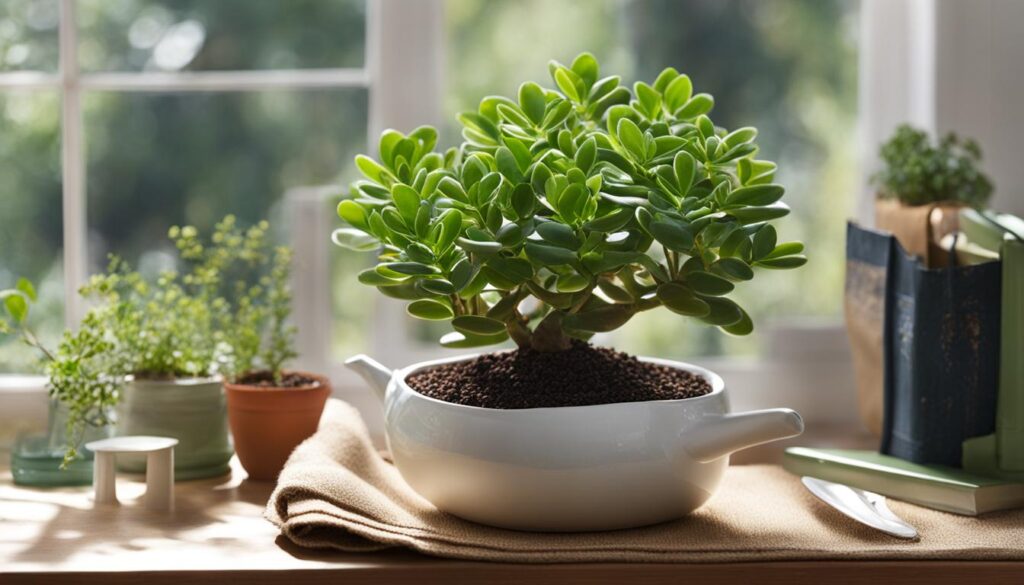
Aloe Vera
Benefits and Care Tips for Aloe Vera Plants
Aloe vera plants are not only known for their low-maintenance nature, but also for their numerous health and skincare benefits. These succulent plants have stiff, fleshy leaves that contain a gel-like substance with soothing properties. Aloe vera gel is commonly used to treat sunburns, skin irritations, and minor cuts and burns.
When it comes to caring for aloe vera plants, they are relatively easy to handle. They prefer bright indirect light but can tolerate lower light levels, making them suitable for low-light environments. Aloe vera plants are highly drought-tolerant and only require infrequent watering. It’s crucial to allow the soil to dry out completely between waterings to prevent root rot.
Aloe vera plants also thrive in warm temperatures and can flourish in well-draining soil. They are adaptable and can be grown both indoors and outdoors. With their medicinal benefits and easy care requirements, aloe vera plants are an excellent choice for individuals looking to introduce low-maintenance indoor greenery into their homes.
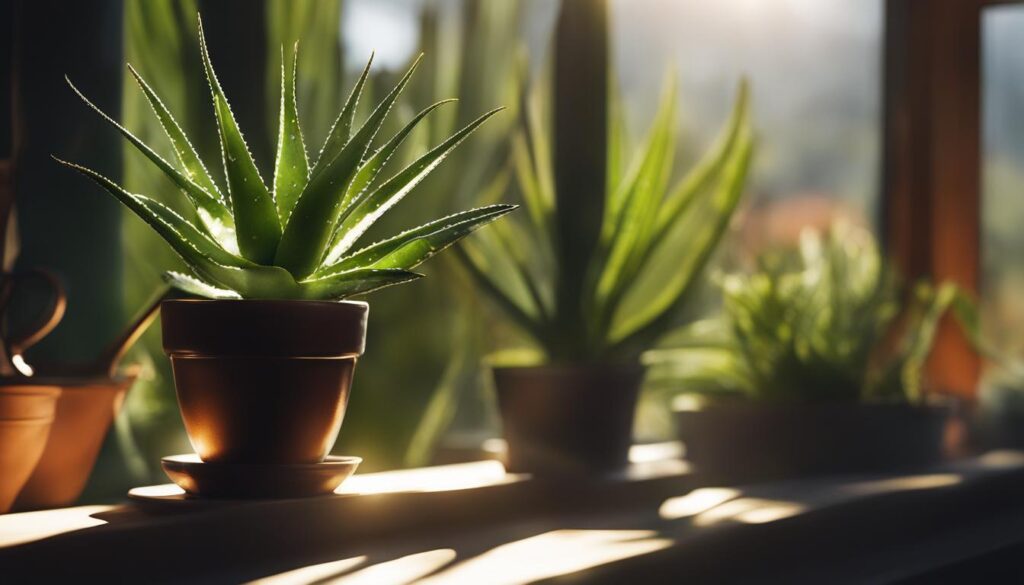
Rubber Plant (Ficus elastica)
Benefits and Care Tips for Rubber Plants
If you’re looking for a low-maintenance indoor plant that adds a touch of elegance to your space, the Rubber Plant is an excellent choice. Scientifically known as Ficus elastica, this plant features large, glossy leaves in various shades of green that bring a vibrant and lush feel to any room. Not only is the Rubber Plant visually appealing, but it also has several benefits that make it ideal for indoor environments.
One of the key advantages of Rubber Plants is their air-purifying properties. They are effective at removing toxins from the air, improving indoor air quality and creating a healthier living environment. Additionally, Rubber Plants can tolerate low light conditions, making them a suitable option for rooms with limited natural light. This versatility allows you to place them in multiple areas of your home or office.
When it comes to care, the Rubber Plant is relatively easy to maintain. It prefers bright indirect light, but it can still thrive in lower light levels. However, it’s important to avoid exposing it to direct sunlight, as this can scorch the leaves. The Rubber Plant requires regular watering, allowing the top few inches of soil to dry out between waterings. This prevents overwatering and helps maintain the plant’s health. Furthermore, Rubber Plants are resilient to moderate temperature variations, making them suitable for most indoor environments.
With their striking foliage, air-purifying qualities, and low-maintenance nature, Rubber Plants are an excellent choice for both beginners and experienced plant lovers. Whether you’re looking to breathe life into a dimly lit corner or add a touch of nature to your workspace, the Rubber Plant is sure to thrive and bring beauty to your indoor spaces.
FAQ
What are the best low-maintenance indoor plants?
Some of the best low-maintenance indoor plants include snake plants, spider plants, pothos, ZZ plants, peace lilies, jade plants, aloe vera, and rubber plants.
What are the benefits and care tips for snake plants?
Snake plants are known for their resilience and ability to tolerate a wide range of conditions. They thrive in low to bright indirect light and require minimal watering. Snake plants are also excellent air purifiers, removing toxins from the air and improving indoor air quality.
What are the benefits and care tips for spider plants?
Spider plants have long, arching leaves with white stripes and are known for their air-purifying properties. They prefer bright indirect light and regular watering, allowing the top inch of soil to dry out between waterings. Spider plants can tolerate lower light conditions and are forgiving when it comes to neglect.
What are the benefits and care tips for pothos plants?
Pothos plants have heart-shaped leaves that come in various shades of green and can tolerate a variety of conditions. They thrive in bright indirect light but can tolerate lower light levels. Pothos plants require minimal watering, allowing the top inch of soil to dry out. They are also excellent air purifiers.
What are the benefits and care tips for ZZ plants?
ZZ plants have glossy, dark green leaves and can tolerate low light and low humidity conditions. They prefer bright indirect light but can tolerate lower light levels. ZZ plants are highly drought-tolerant and require minimal watering. They are also excellent air purifiers.
What are the benefits and care tips for peace lilies?
Peace lilies have dark green leaves and white flowers, thrive in low light conditions, and are excellent air purifiers. They require regular watering, allowing the top few inches of soil to dry out. Peace lilies prefer moderate temperatures and high humidity.
What are the benefits and care tips for jade plants?
Jade plants are succulent plants with thick, fleshy leaves that can tolerate a variety of conditions. They prefer bright indirect light and require minimal watering. Jade plants are highly adaptable and can withstand periods of drought. They are also known for their longevity and resilience.
What are the benefits and care tips for aloe vera plants?
Aloe vera plants have stiff, fleshy leaves that contain a gel-like substance with soothing properties. They prefer bright indirect light and require infrequent watering. Aloe vera plants are highly drought-tolerant and thrive in warm temperatures and well-draining soil.
What are the benefits and care tips for rubber plants?
Rubber plants have large, glossy leaves and are excellent air purifiers. They can tolerate low light conditions and require regular watering, allowing the top few inches of soil to dry out. Rubber plants are relatively forgiving when it comes to temperature fluctuations and can withstand moderate variations.


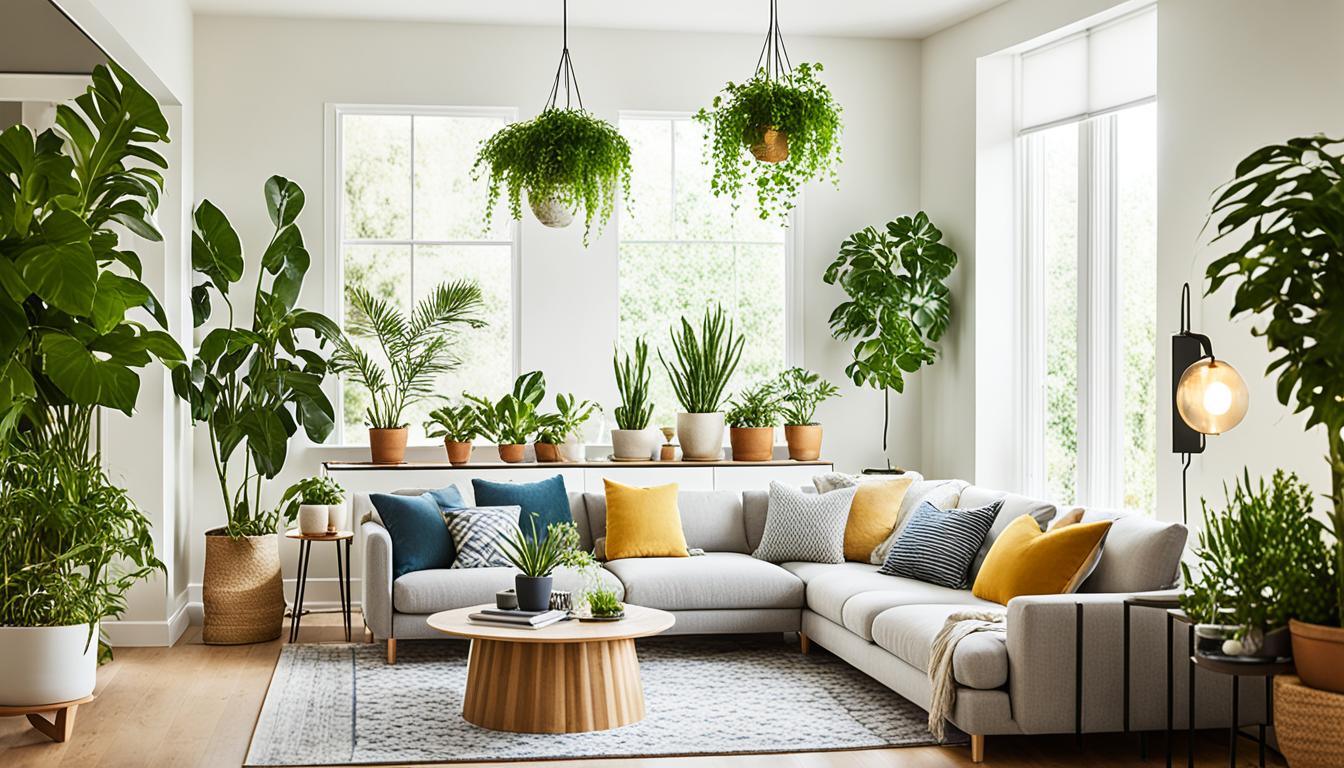
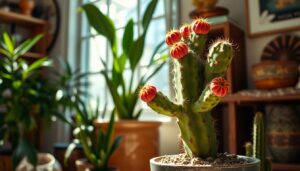
Pingback: Snake Plant Survival Guide: Why It’s the Perfect Low-Maintenance Cold-Tolerant Houseplant